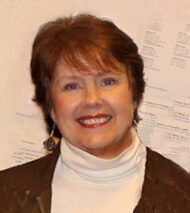
Nancy Huntting, Aesthetic Realism consultant, writes:
“Our Just-Me & Other People” is about one of the biggest matters in everyone’s life: a rift in us between ourselves alone, and ourselves with others, caring for others. You’ll be thrilled to see how a noted American writer, Henry David Thoreau, represents this deep question of self. Magnificent understanding of people and kind, unprecedented literary criticism are at one in the exciting new issue of The Right of Aesthetic Realism to Be Known.
The commentary by Ellen Reiss begins:
Dear Unknown Friends:
Here is part 3 of the landmark lecture by Eli Siegel that we are now serializing. He gave it on October 17, 1975. And it is about the American writers Henry David Thoreau and James Russell Lowell, and tremendous, confusing opposites in the life of everyone: the fact that we are always our single particular self, an individual, alone, one, yet we have to do with the multitudinous outside world, including many other people. Lowell, Mr. Siegel shows, accents the self as social; Thoreau, the self as alone. But each of them, like all of us, had both these opposites and suffered from the feeling that one’s self alone seemed a different self from that in the midst of life with one’s many fellow humans.
Mr. Siegel comments on passages from Lowell’s 1865 essay on Thoreau, and on writing by Thoreau himself. And he speaks too about opposites related to one and many: order and disorder, tumult and repose. This lecture is a vivid, rich, deep presentation, grand in scholarship and kindness, of the Aesthetic Realism principle “All beauty is a making one of opposites, and the making one of opposites is what we are going after in ourselves.”
The Problem of How to See Thoreau
How to see Thoreau and his value has been a big matter in American literary criticism, and very much so in recent years. In October 2015, four decades after the lecture we’re serializing, there appeared an article in the New Republic titled “Everybody Hates Henry: Literary Saint or Arrogant Fraud—Why Do We Need Thoreau to Be One or the Other?” Its author, Donovan Hohn, quotes from the Lowell article and also from various current writers, some of whom go further than Lowell in expressing distaste for Thoreau.
I’m not now commenting on the history of Thoreau’s literary reputation. His Walden has long been seen as an American classic; and his essay “Civil Disobedience” made him treasured by millions of people during the Vietnam War. (Mr. Siegel discusses that essay later in the 1975 lecture.) But it seems that there has been a big tide against him in our present century. And the anger has fundamentally to do with the opposites Mr. Siegel is speaking about. Hohn quotes, for instance, Kathryn Schulz, who wrote in the New Yorker in 2015, “The real Thoreau was in the fullest sense of the word, self-obsessed: narcissistic,…adamant that he required nothing beyond himself to…thrive in the world.” He quotes Garrison Keillor, who calls Thoreau “a sorehead and loner”; and Jill Lepore, who asserts disapprovingly and with sarcasm, “Above all, he cherished his manly self-sufficiency.”
Hohn himself largely defends Thoreau, and says too that Thoreau wrote “contradictorily.” In a way, he did. But what no critic but Eli Siegel saw is: Thoreau didn’t know how to put together his sense of himself and his care for people not himself. He didn’t know how to put together what Mr. Siegel calls (with humor and style) Thoreau’s “desire to build a house in which only he and a woodchuck would live” and the passion in the same Thoreau that every person, of whatever skin tone, should be seen justly. The desire in Thoreau to be aloof from people and his breaking the law to shield runaway slaves, were not contradictions: they stood for opposites he could not wholly put together. Hohn quotes—as Eli Siegel did in another lecture on Thoreau—a description by the abolitionist Daniel Conway. Conway visited the Thoreau household, where the author of Walden was hiding a fugitive slave. “I observed,” writes Conway,
the tender and lowly devotion of Thoreau to the African. He now and then drew near to the trembling man, and with a cheerful voice bade him feel at home, and have no fear that any power should again wrong him. The whole day he mounted guard over the fugitive, for it was a slave-hunting time. But the guard had no weapon, and probably there was no such thing in the house. The next day the fugitive was got to Canada, and I enjoyed my first walk with Thoreau.
Discomfort & Ourselves
I think the current intensity against Thoreau and the discomfort with him comes from the fact that he can remind us of opposites we are troubled by in ourselves. Though we may not be clear about this, he brings up something we’re ashamed of: the rift we have made between our Just-Me self and the fact that other people should mean something to us…. Read more